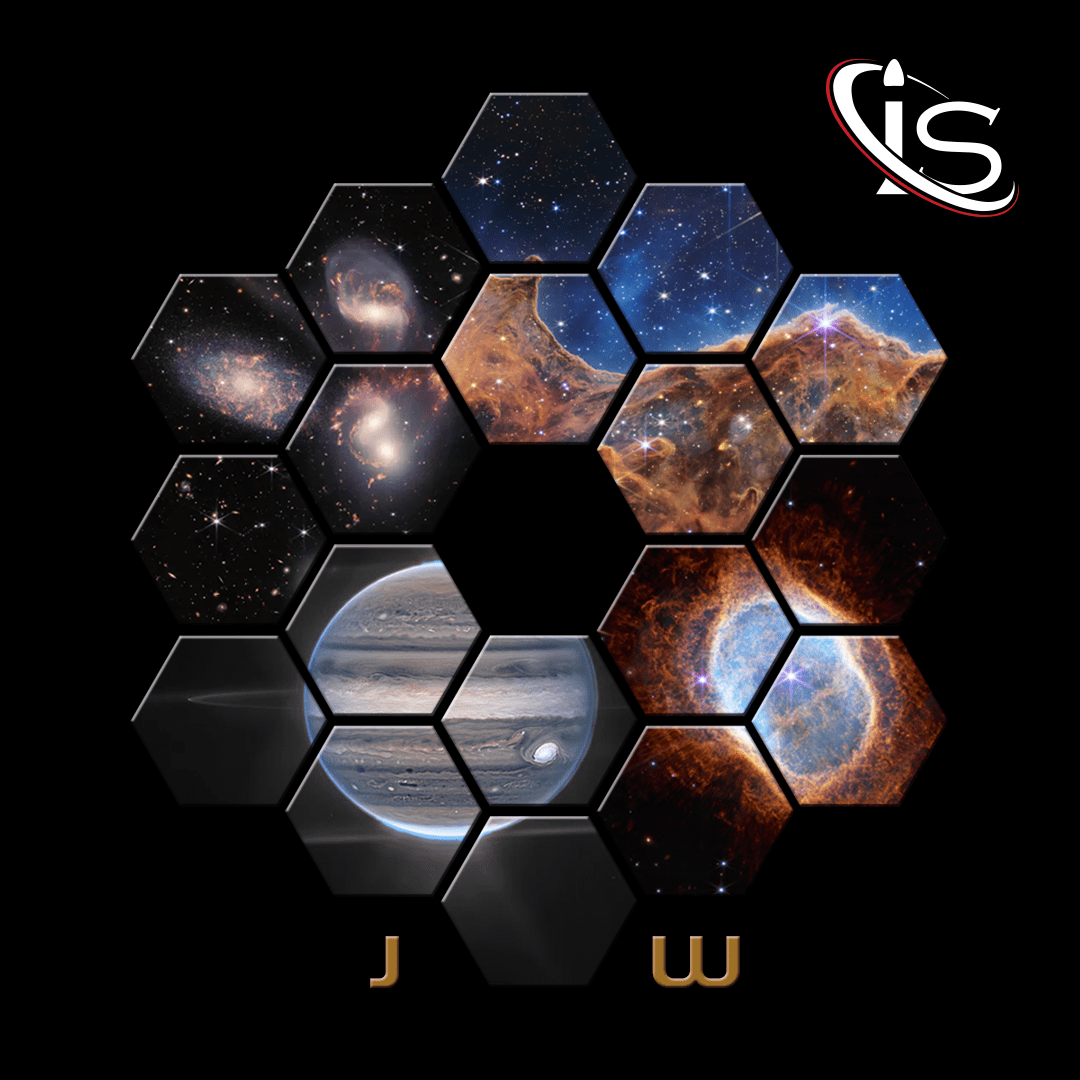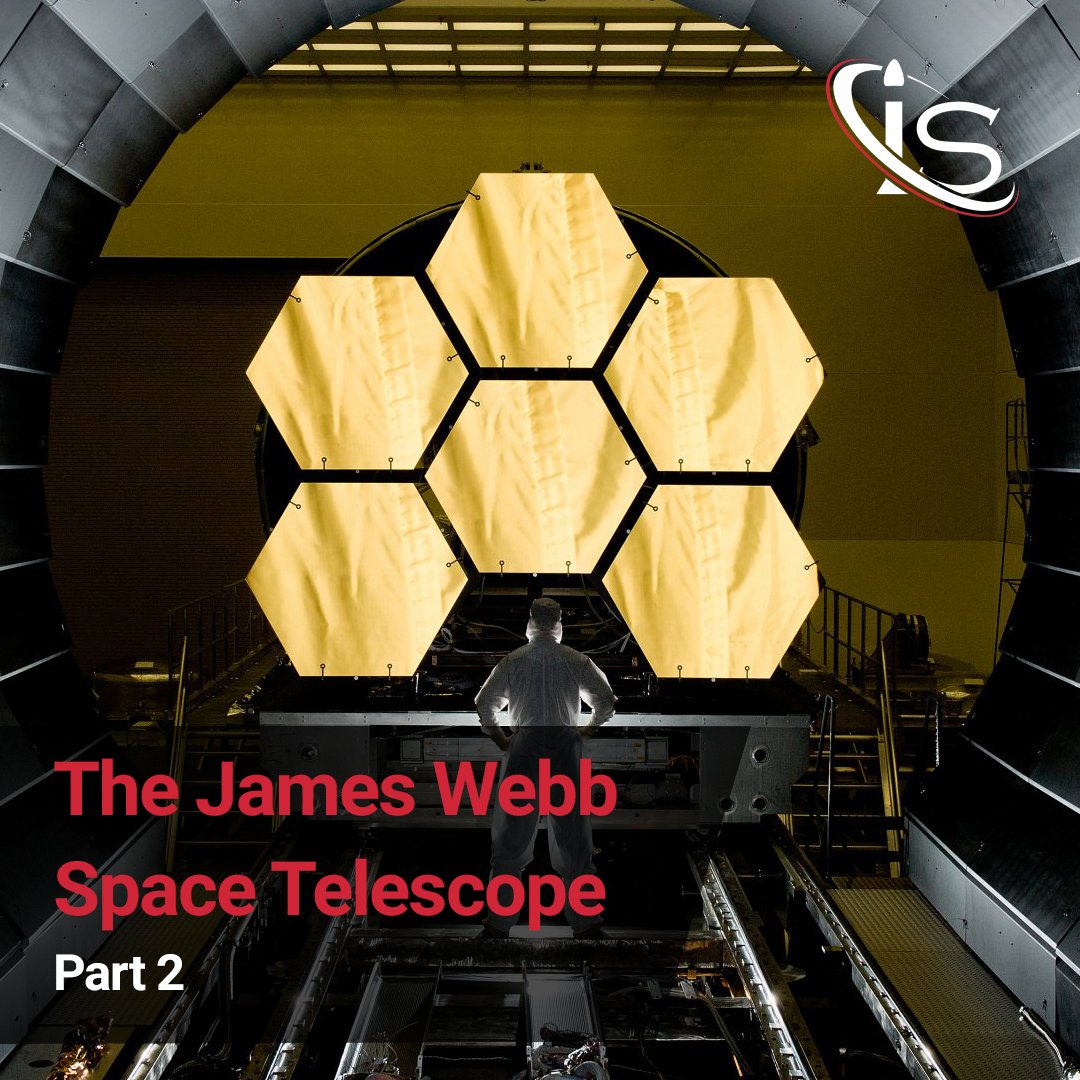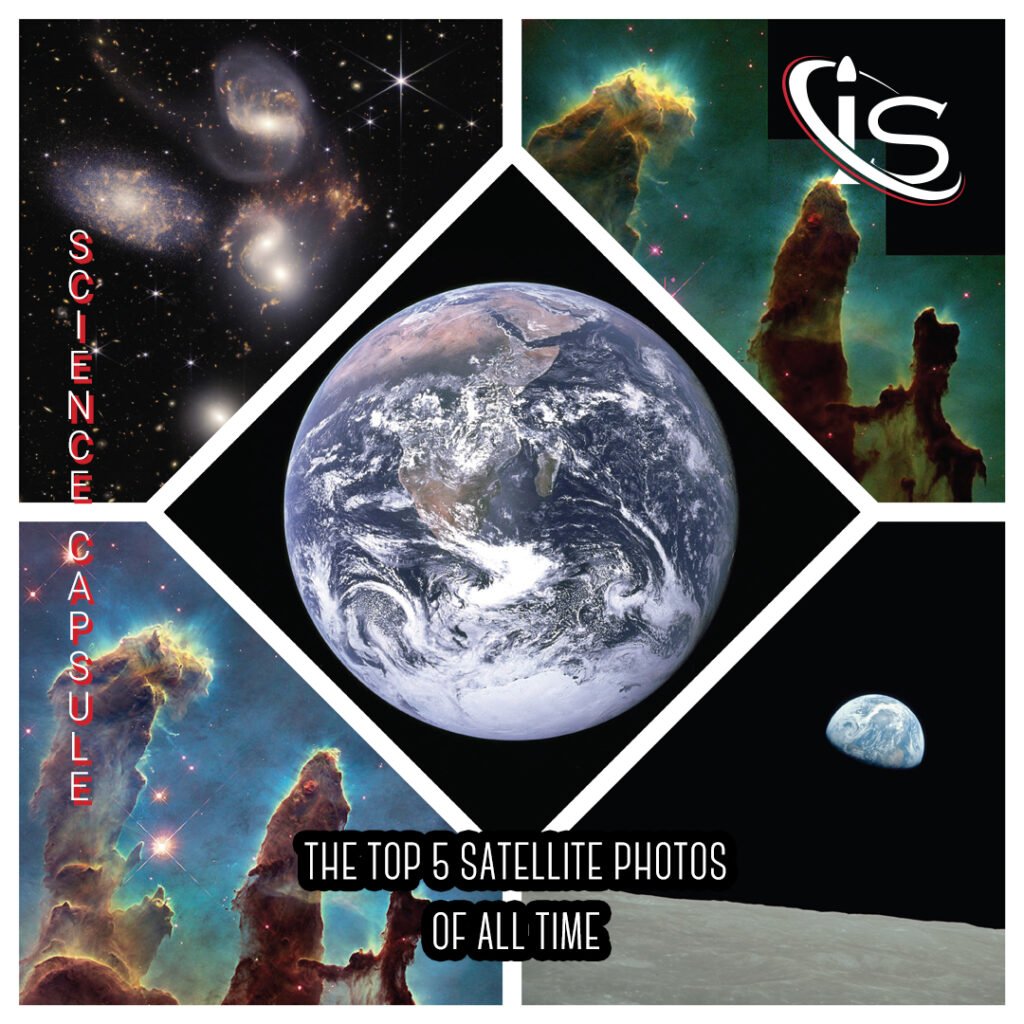
Welcome back to another science capsule. After examining satellite photography and television, it is time to focus on some of the best, most famous satellite photos of all time. Not only have these been important for scientific purposes, they also look quite stunning. Because there are so many incredible pictures, I will restrict this list by not repeating the same image. This is so a picture of Earth from space does not constitute 90% of the capsule. With all that being said, it is time to look at some satellite photos.
The Blue Marble
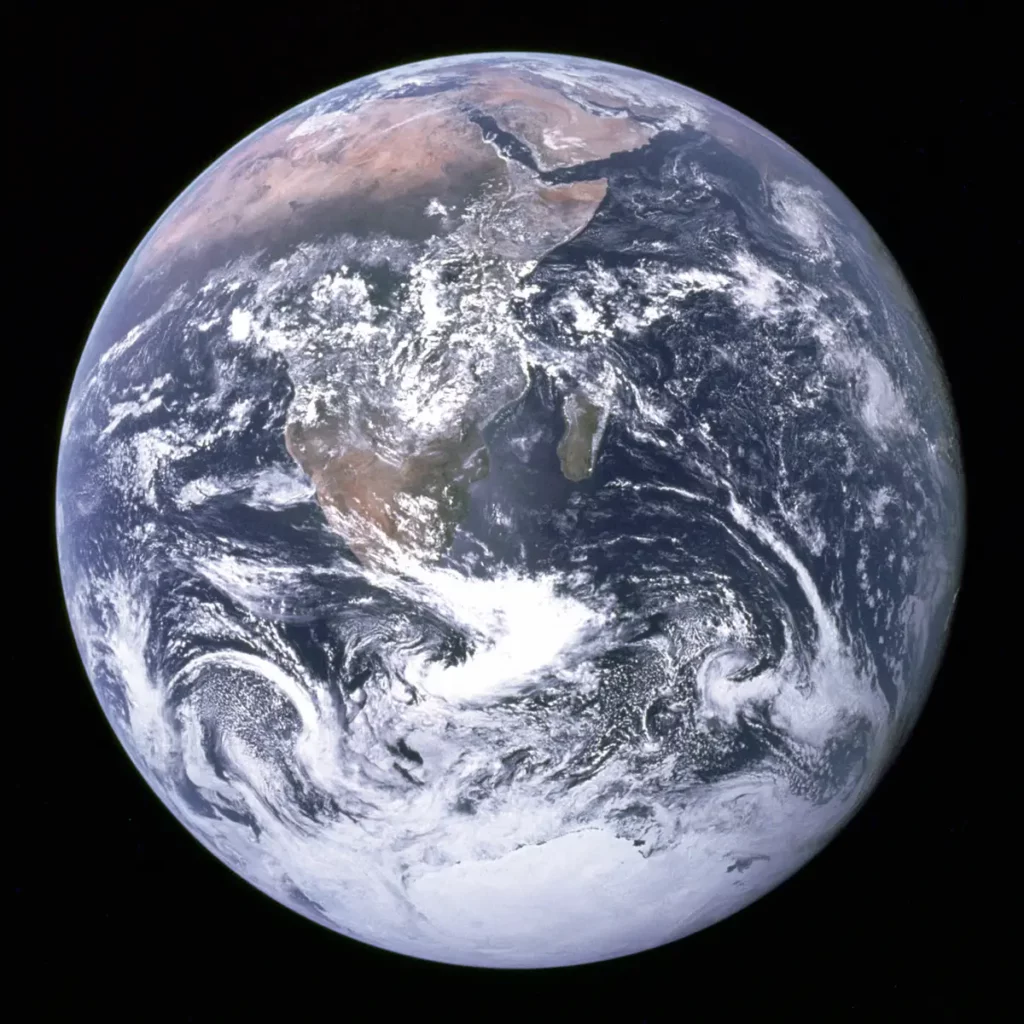
Let’s start this off with the situation I just described, a picture of Earth taken from space. It was hard to pick one for this “category”, given the vast selection available. However, the iconic “Blue Marble” photo had to make an appearance. Avid readers of our blog might recall this one from the capsule on “How Do Satellite Images Work?”. Taken by the Apollo 17 crew on December 7th,1972, this picture is one of the most iconic ones of our beloved planet. As you can see from the image, the Earth has a definite glass marble look to it, hence the name. The fact that this was taken while on the way to the Moon just adds to the historical significance of this moment.
The Pillars of Creation
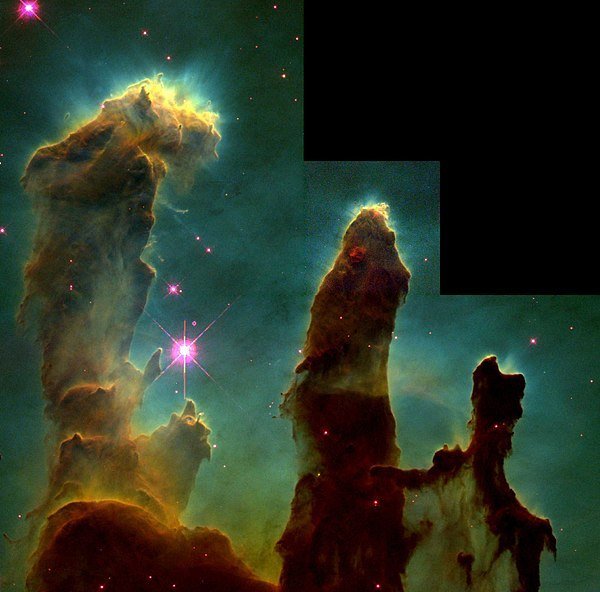
This marks the first entry from what might be the most famous satellite of all time, the Hubble Space Telescope. Anyone who is interested and familiar with space has most likely already seen this picture. And there is a good reason for that. What can be seen here is quite the monumental event. In fact, the name alone, “The Pillars of Creation” gives off the feeling that something special is happening here. And now, we are going to dive into what exactly that is. Also, for anyone wondering, this image dates back to April 1st, 1995, making it one of Hubble’s earlier photos.
However, this would not be the last time that the famous telescope photographed the Eagle Nebula and its Pillars of Creation. In fact, there is a newer picture of this region — dating back to 2014 — that might be more recognizable nowadays.

It once again was taken by Hubble and showcases this incredible cluster in even finer detail. The improved picture quality is a good reminder of how Hubble’s technology is constantly replaced with newer, more cutting-edge one. As we discussed in our “Hubble vs James Webb” capsule, this is what has enabled it to live on for many decades.
As for the pillars themselves, they showcase gas clouds and cosmic dust, as well as the actual “elephant trunks” of the pillars. The effects of the intense radiation of new stars and strong winds of nearby massive ones can also be observed in this iconic satellite photo.
Earthrise

Everyone knows about sunrise. We also see the Moon rise every day. However, living on Earth, we would never see our own planet rise. That is, unless the picture was taken from somewhere else. Our very own Moon, perhaps?
Yes, that is, indeed what this image is showing. As the Apollo 8 crew swung around our satellite in 1968, they were able to capture this absolutely breathtaking picture of Earth rising over the Moon. Not only does this look incredible, but it is also a phenomenon that we could never observe without going out into space. Now, this is a bit of a rule break, as the Apollo 8 mission was not a satellite. And this is also another picture of Earth from space. However, the technology behind this image is very much in line with everything else that we are discussing today. And the image feels distinctly different to something like the “Blue Marble” one. Therefore, it felt appropriate to include it, here. More than that, it would not feel right to omit such a great and unique picture of our planet.
Stephan’s Quintet
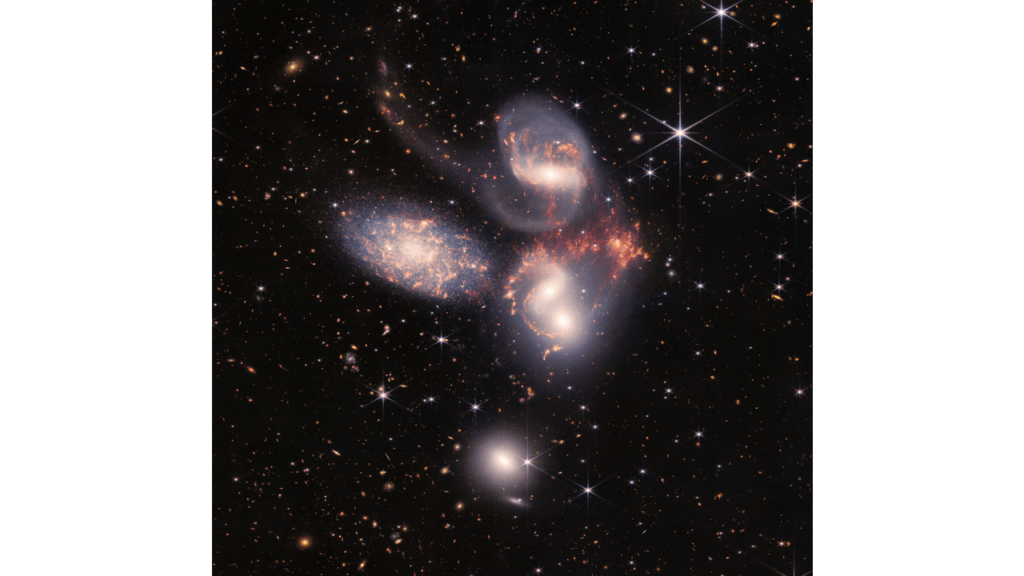
As we just had a Hubble photo, it seems only natural to end this capsule with a James Webb one. The machine that has been tasked with further uncovering the secrets of the universe may have only been around for a little over a year. However, that does not mean that it has not taken a plethora of incredible pictures already. There are so many good ones, in fact, that choosing one was quite the challenge. Therefore, my final decision was one that fully showcases James Webb’s signature infrared sensors.
That photo is known as “Stephan’s Quintet”. Thanks to JWST’s NIRCam (Near-Infrared Camera) and MIRI (Mid-Infrared Instrument), NASA was able to get an entirely new look at this grouping of five galaxies. This image could almost be its own capsule with how much is going on in it. However, the most important elements are on the right and left of it, respectively.
On the right, Webb’s infrared technology was able to capture the shockwaves as one of the galaxies is actually smashing through the cluster. These are shown in red and gold colors. They can be observed around the region of the pair of central galaxies.
Closer Than the Rest
On the left, there is the closest galaxy to us, but also the furthest from the other ones. At first that may not seem like the case. However, it is crucial to remember that even though the picture is two-dimensional, space very much is not. This means that what might appear to be really close to another object at a glance is not necessarily that close in actuality. What really gives away the fact that the leftmost galaxy is the furthest from the rest is also what makes it stand out the most.
Due to its relative proximity to us, Webb was able to capture this galaxy more clearly. Not only does it show the individual stars inside it, this incredible telescope was also able to distinctly pick up the galaxy’s bright core. Furthermore, the older stars that are sending out dust are easily recognizable as the red points reproduced by the NIRCam.
To put in perspective how much closer this galaxy is to us than the others, NGC7320 — that is its official name — sits at a “mere” 40 million light years away from Earth. Meanwhile, the other 4 are approximately 290 million light years from our planet. Of course, there are other galaxies that are much farther away than even these. However, the difference between 40 and 290 million light years away is still quite substantial. And the starkly different resolution of NGC7320 compared to the other members of the quintet showcases this quite nicely.
Only the Beginning
Given the sheer amount of incredible satellite photos out there, today only scratched the surface of this topic. So, if you would like to see more, please let us know in the chat box or the comments of our social media pages. We will happily oblige. Until then, this will do it for our exploration of the wonderful world of satellite photos. I hope you enjoyed seeing and learning more about some of the incredible pictures mankind has been able to take from space.
Next week will be a technical capsule on all the tests that are performed on a rocket before its maiden flight. If you are interested in rockets at all — which I am guessing is most of the people reading this — this is a capsule you will not want to miss. “See” you next Wednesday, back here, at impulso.space.
CREDITS
The Blue Marble
Image Credit: NASA
The Pillars of Creation
Credits: NASA, ESA, STScI, J. Hester and P. Scowen (Arizona State University)
Credits: NASA, ESA and the Hubble Heritage Team (STScI/AURA)
Earthrise
Image Credit: NASA
Stephan’s Quintet
Image credit: NASA, ESA, CSA, and STScI
